The Seaside Pavilion
China, Zhejiang
completed
in 2024
The pavilion is designed to evoke a profound sense of arrival at the island's entrance, enriching the village context and establishing a distinctive identity for the area. The initial concept was inspired by tidal movements, allowing visitors to experience a dynamic interplay between the waves and the pavilion as both would rise and fall together over time. However, considering the needs of the primary audience—tourists—the design was revised to harness wind power for immediate visual effects, optimizing the structure's form for greater impact.
After conducting several site surveys, the decision was made to locate the pavilion on a defunct cargo pier from the 1960s. This site, nestled between the new passenger terminal and the village, is surrounded by rugged rocks, offering a stunning backdrop of blue skies and the sea—an ideal setting for the pavilion.
The architectural design features elongated blades suspended from a frame, which sway gently with the sea breeze, mirroring the movement of the waves. This poetic yet practical installation revitalizes the existing pier through essential repairs and the addition of new railings, transforming it into a gathering area for the island’s elderly residents. Here, they can sit quietly, watching ferries dock and observing the brief flurry of activity that accompanies tourist arrivals.
The construction of the pavilion was a meticulous process, with the installation prefabricated in a factory before being transported over two days by three large trucks to Zhoushan. From there, it was shipped to Chaishan Island using a rented 300-ton cargo vessel and crane, ensuring that all necessary equipment for assembly was also delivered via sea.
Comprising 36 seven-meter-long blades arranged in sets of three, the design of the pavilion took into account precise calculations made through computer simulations to optimize movement and balance. Each blade is connected to a main support via a bearing, with a counterweight block at its tail to adjust for balance during operation. To prevent collisions among the blades, linkages and limiters were incorporated, and after testing different options such as flexible springs and hydraulic buffers, rubber was chosen for its simplicity, UV resistance, and corrosion resistance.
Given its coastal location, the pavilion employs corrosion-resistant steel complemented by anti-rust coatings. Initially, fabric membranes were considered for the blades; however, higher-strength fishing ropes were ultimately selected for superior durability and wind resistance. The blades sway gently in a breeze (Force 3 wind) and visibly respond to gusts at Force 5. Additionally, in anticipation of severe weather conditions such as typhoons, the blades can be securely tied to the frame to prevent any potential damage.
Through this thoughtful design, the pavilion not only enhances the aesthetic appeal of its surroundings but also serves as a functional and beloved space for the community.
After conducting several site surveys, the decision was made to locate the pavilion on a defunct cargo pier from the 1960s. This site, nestled between the new passenger terminal and the village, is surrounded by rugged rocks, offering a stunning backdrop of blue skies and the sea—an ideal setting for the pavilion.
The architectural design features elongated blades suspended from a frame, which sway gently with the sea breeze, mirroring the movement of the waves. This poetic yet practical installation revitalizes the existing pier through essential repairs and the addition of new railings, transforming it into a gathering area for the island’s elderly residents. Here, they can sit quietly, watching ferries dock and observing the brief flurry of activity that accompanies tourist arrivals.
The construction of the pavilion was a meticulous process, with the installation prefabricated in a factory before being transported over two days by three large trucks to Zhoushan. From there, it was shipped to Chaishan Island using a rented 300-ton cargo vessel and crane, ensuring that all necessary equipment for assembly was also delivered via sea.
Comprising 36 seven-meter-long blades arranged in sets of three, the design of the pavilion took into account precise calculations made through computer simulations to optimize movement and balance. Each blade is connected to a main support via a bearing, with a counterweight block at its tail to adjust for balance during operation. To prevent collisions among the blades, linkages and limiters were incorporated, and after testing different options such as flexible springs and hydraulic buffers, rubber was chosen for its simplicity, UV resistance, and corrosion resistance.
Given its coastal location, the pavilion employs corrosion-resistant steel complemented by anti-rust coatings. Initially, fabric membranes were considered for the blades; however, higher-strength fishing ropes were ultimately selected for superior durability and wind resistance. The blades sway gently in a breeze (Force 3 wind) and visibly respond to gusts at Force 5. Additionally, in anticipation of severe weather conditions such as typhoons, the blades can be securely tied to the frame to prevent any potential damage.
Through this thoughtful design, the pavilion not only enhances the aesthetic appeal of its surroundings but also serves as a functional and beloved space for the community.
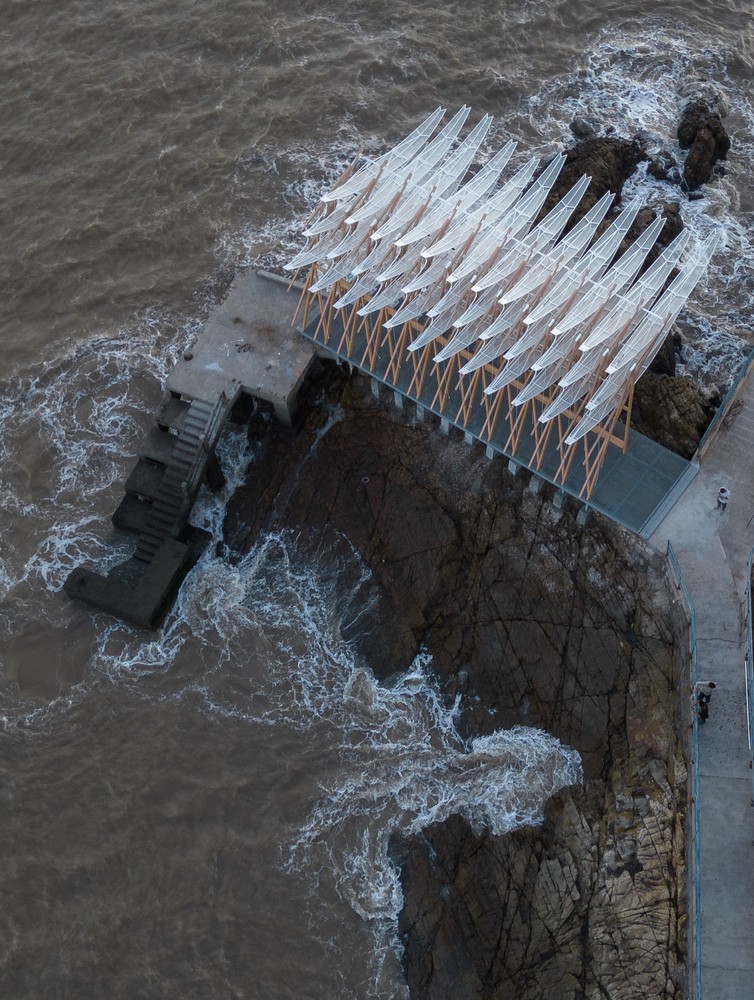
©
Wenjun Liang
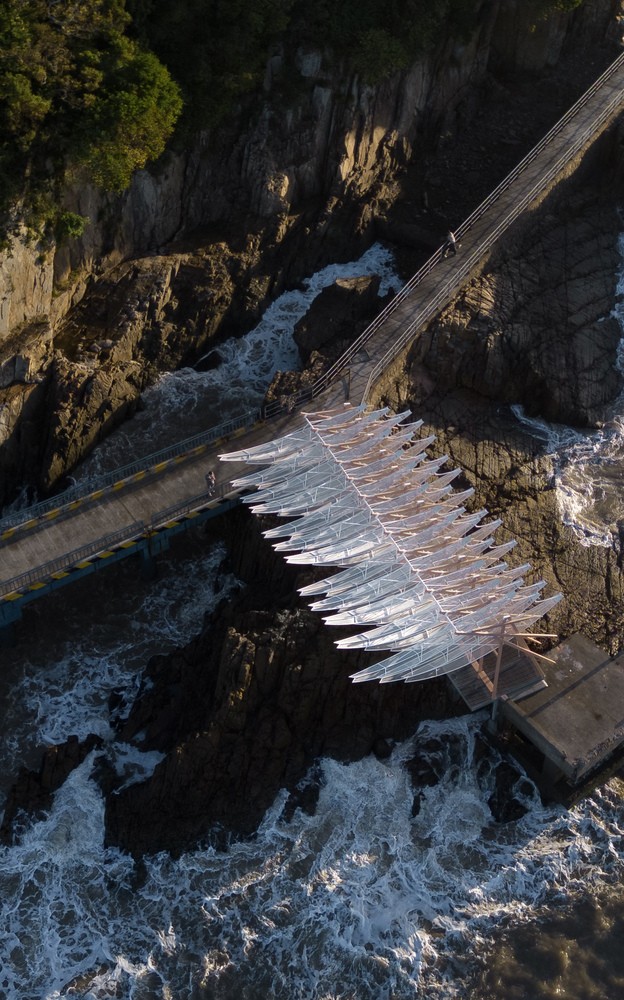
©
Wenjun Liang

©
Fangfang Tian

©
Wenjun Liang
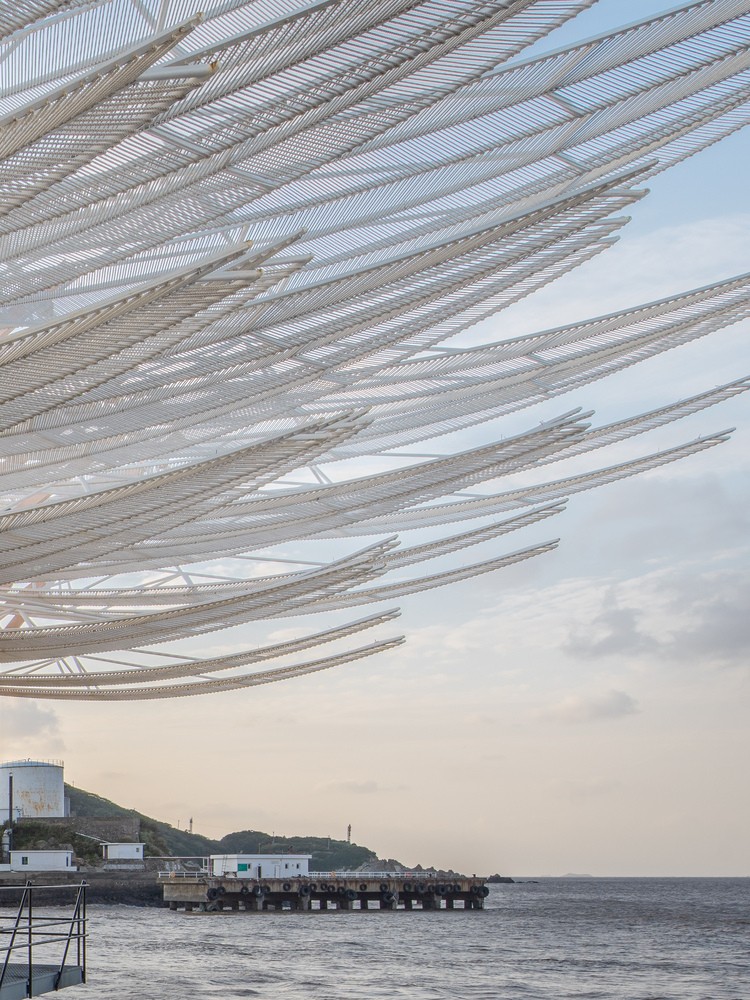
©
Wenjun Liang

©
Wenjun Liang
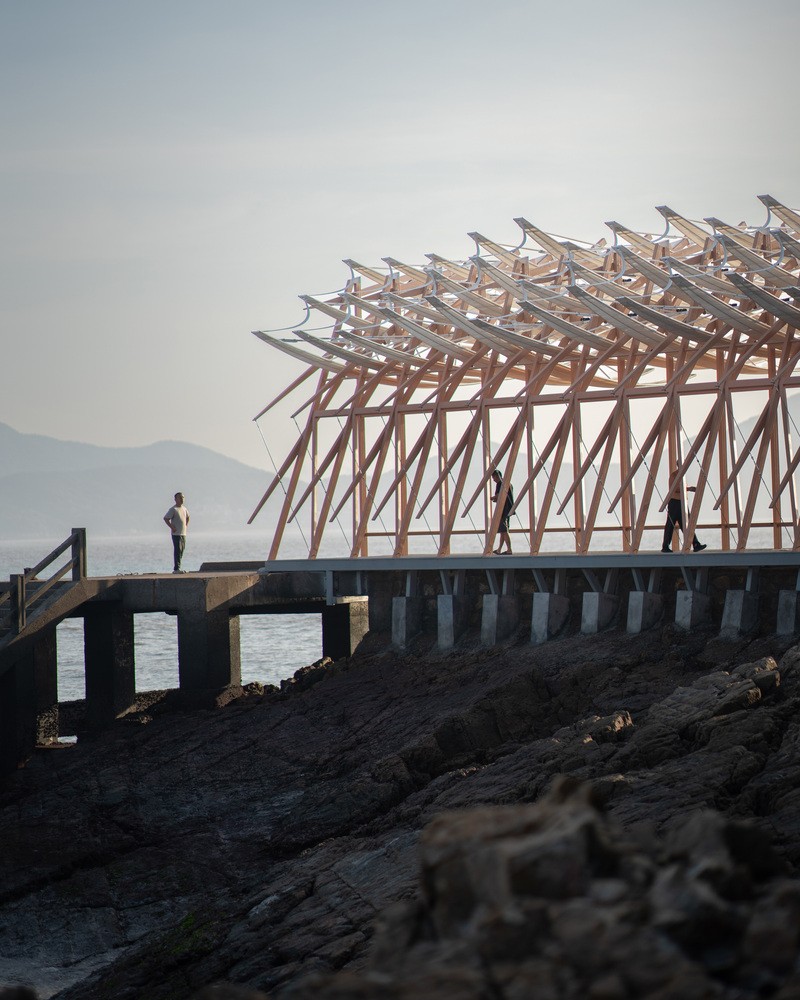
©
Wenjun Liang

©
Wenjun Liang

©
Wenjun Liang

©
Fangfang Tian
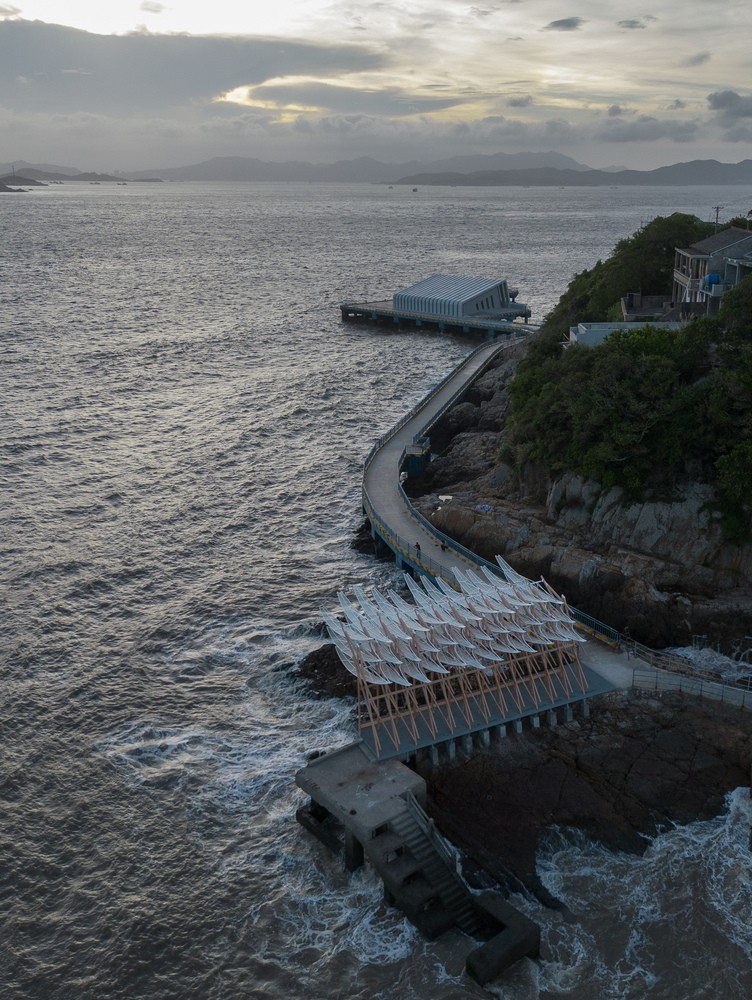
©
Wenjun Liang

©
Fangfang Tian

©
Wenjun Liang
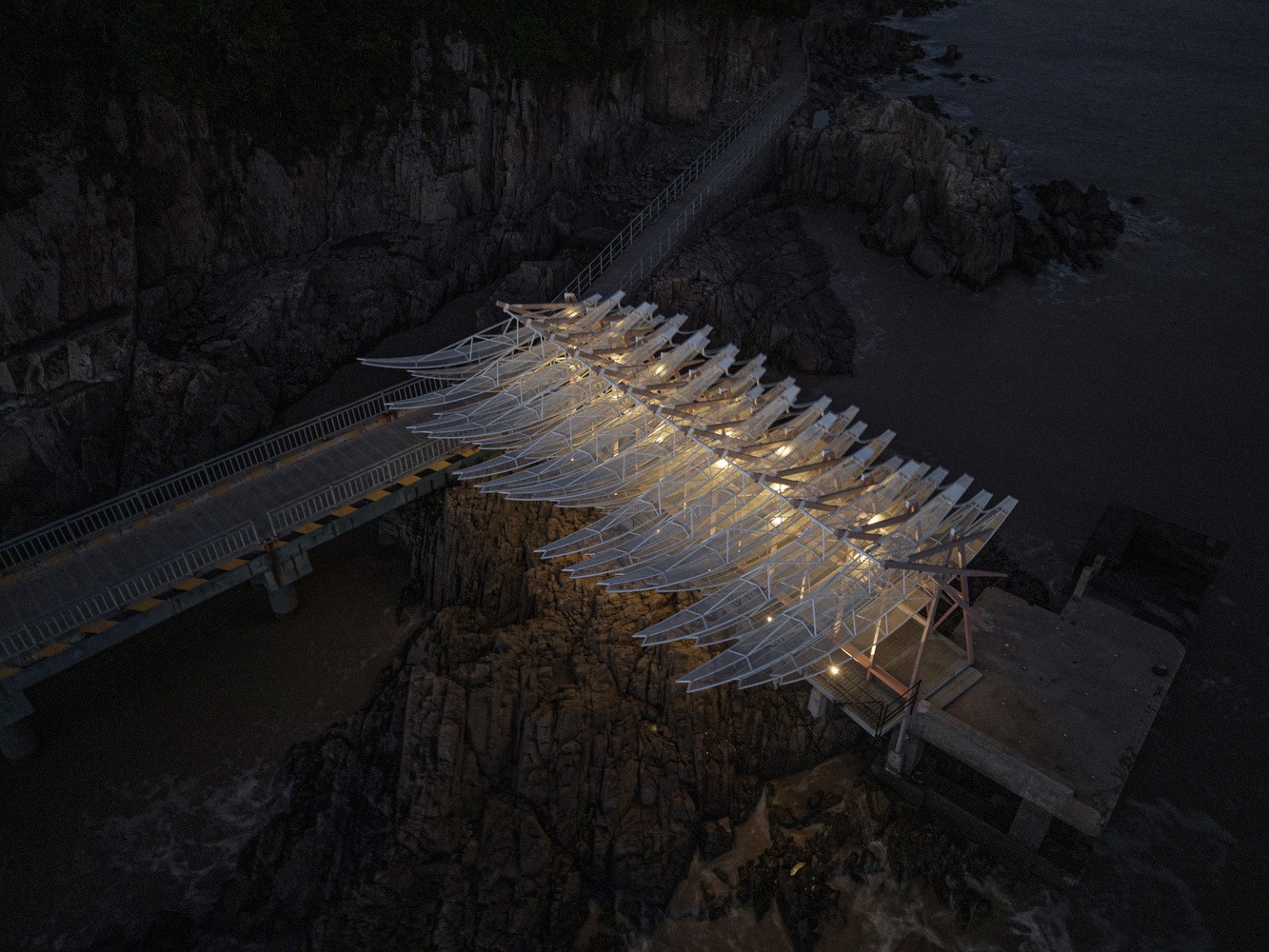
©
Wenjun Liang
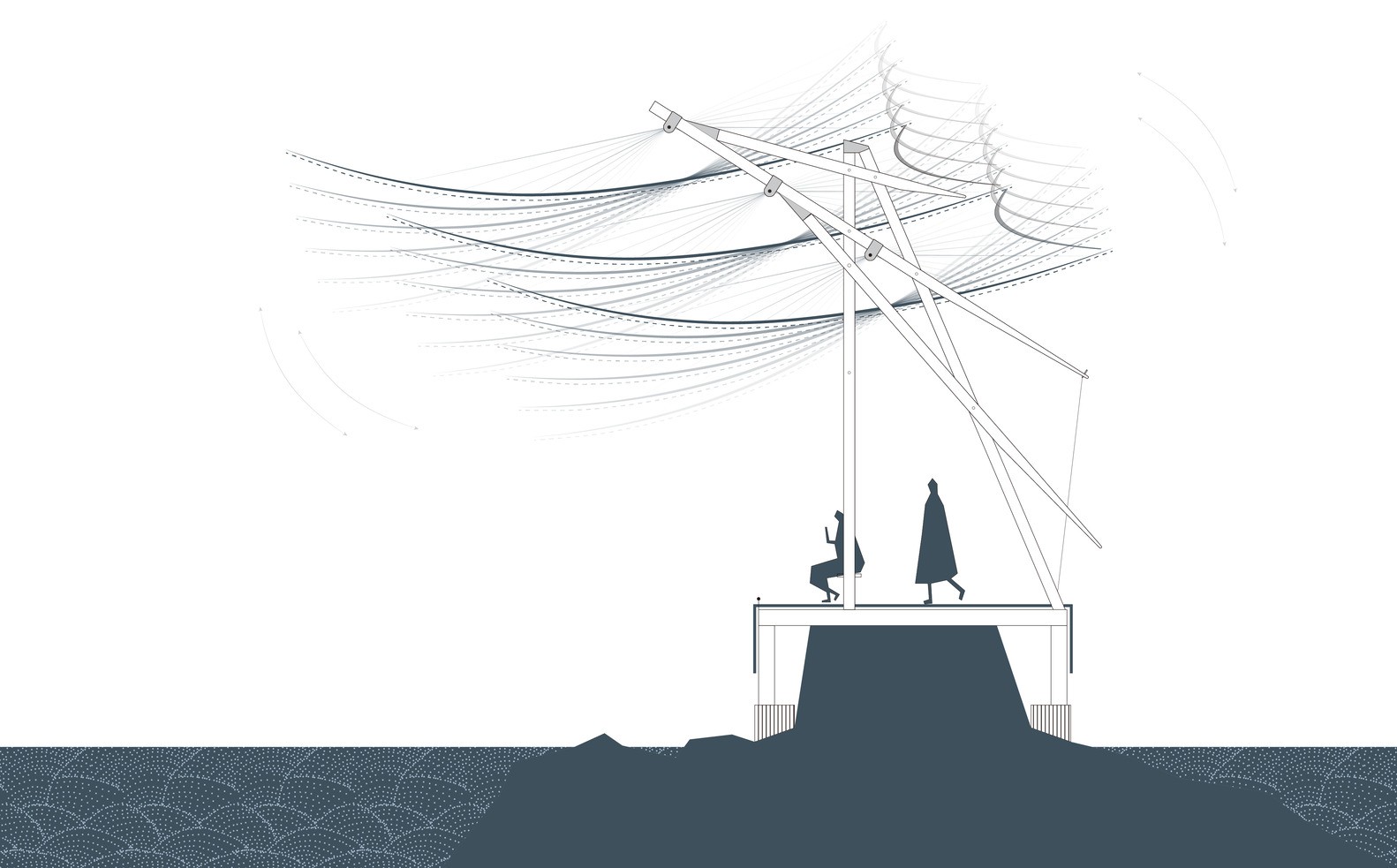
©
GN Architects
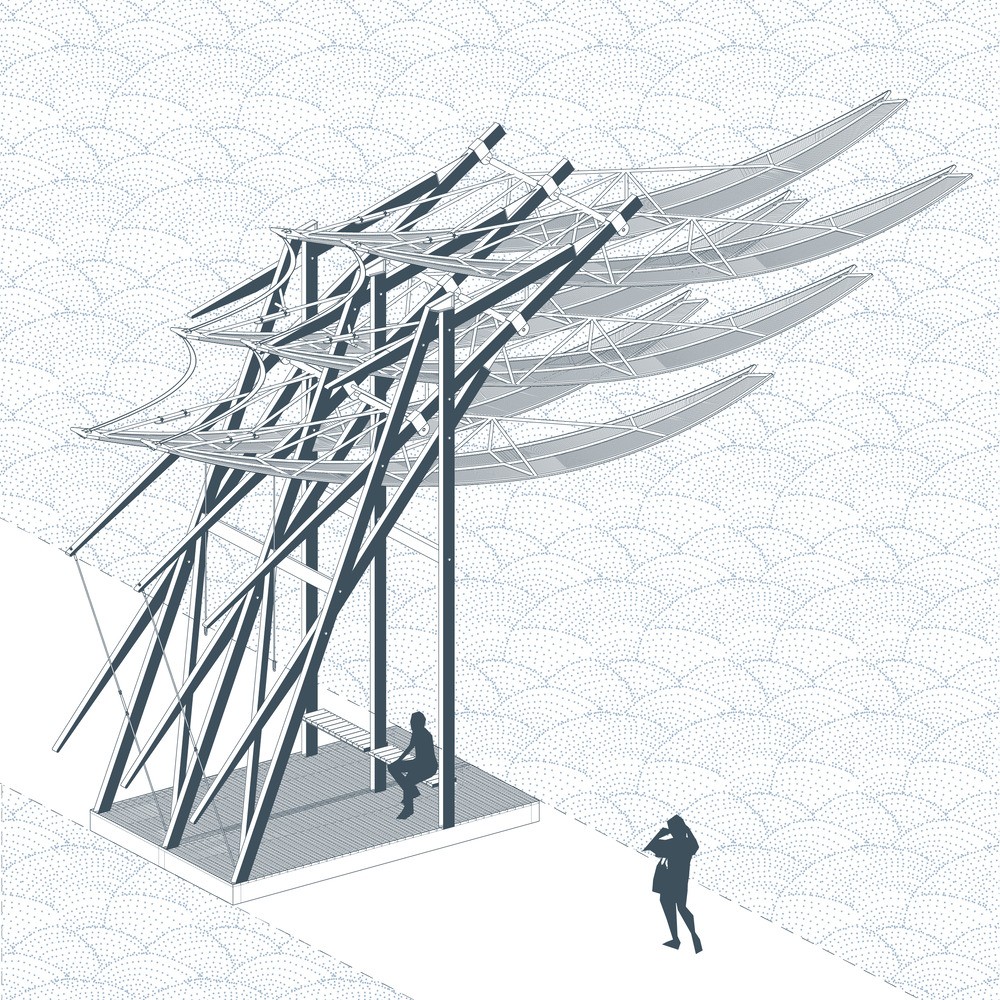
©
GN Architects
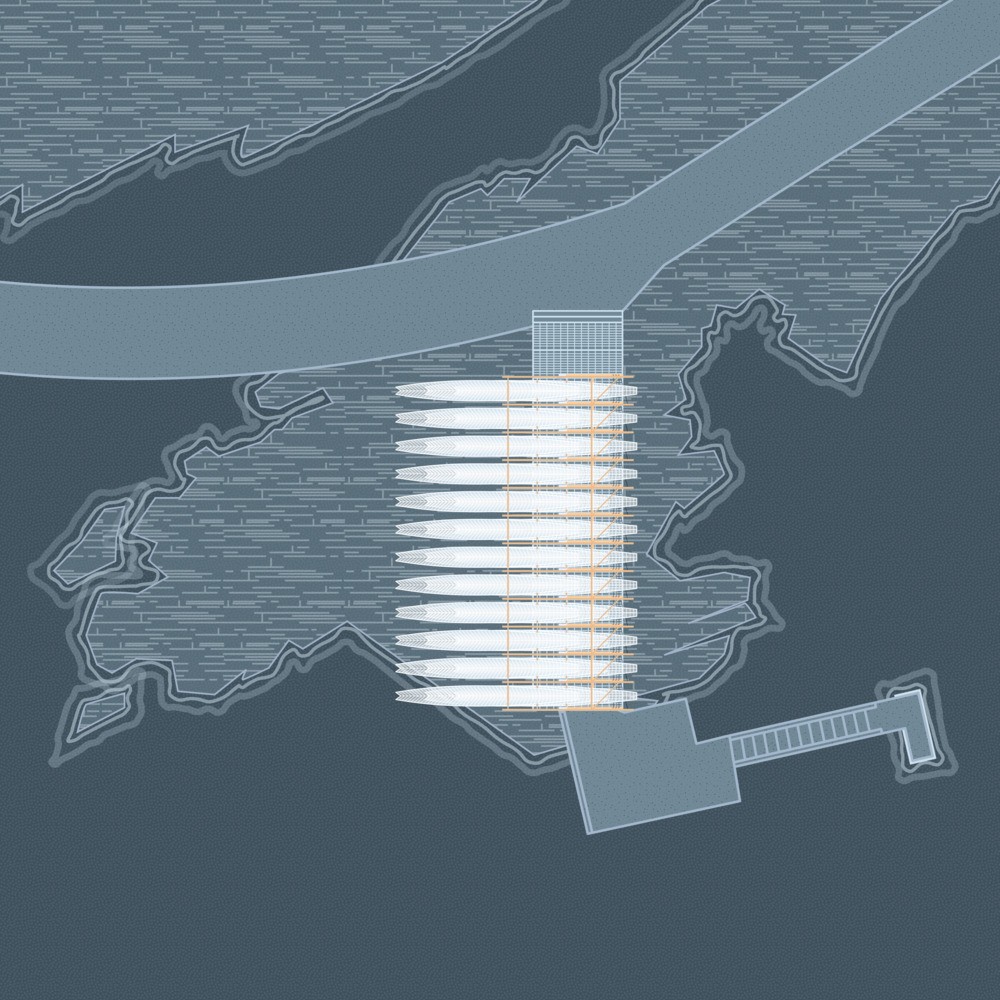
©
GN Architects
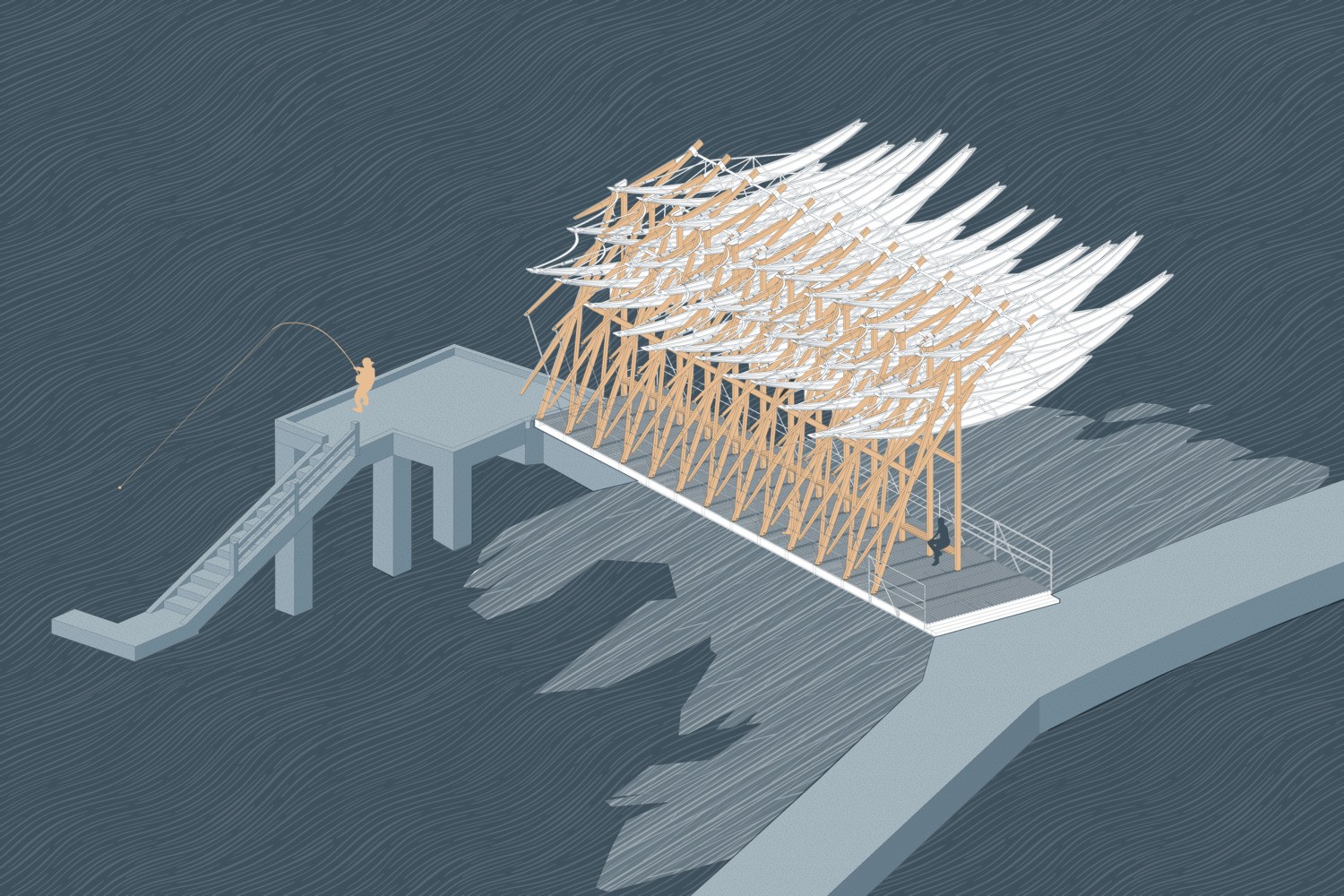
©
GN Architects
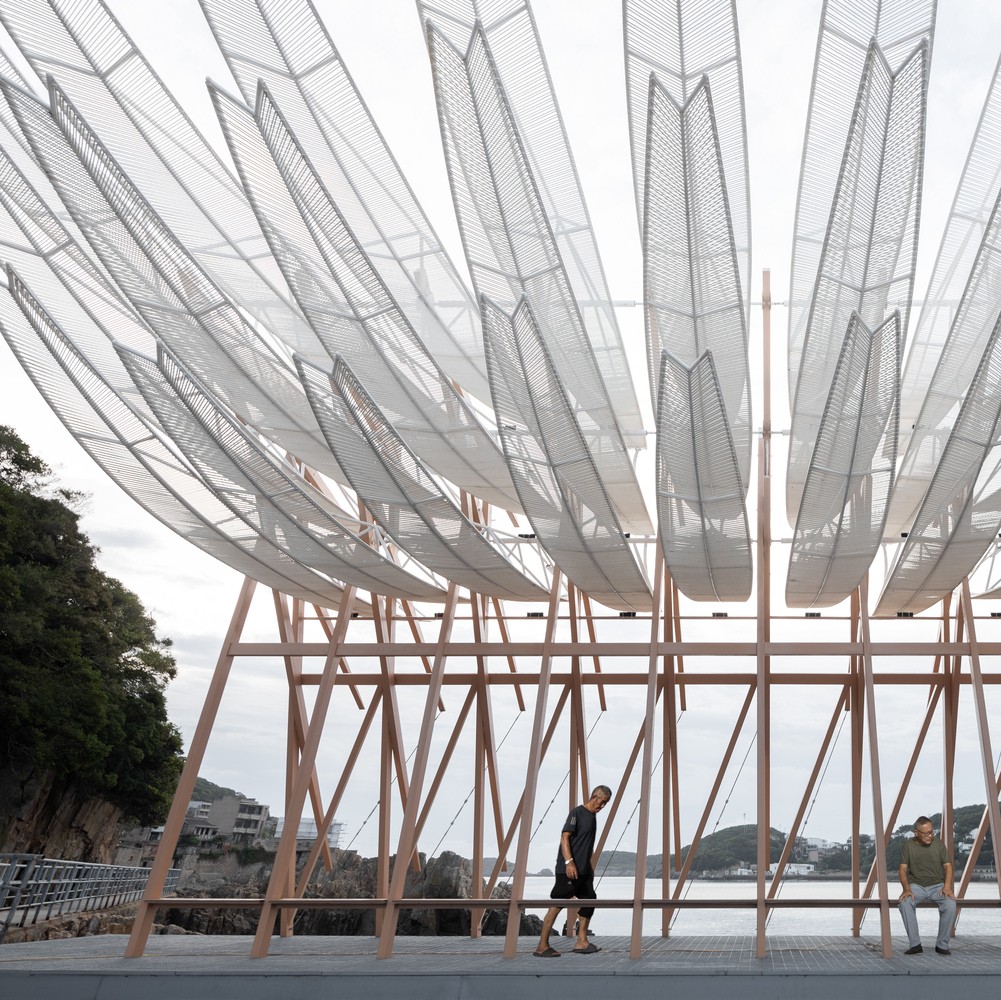
Comments
(0)